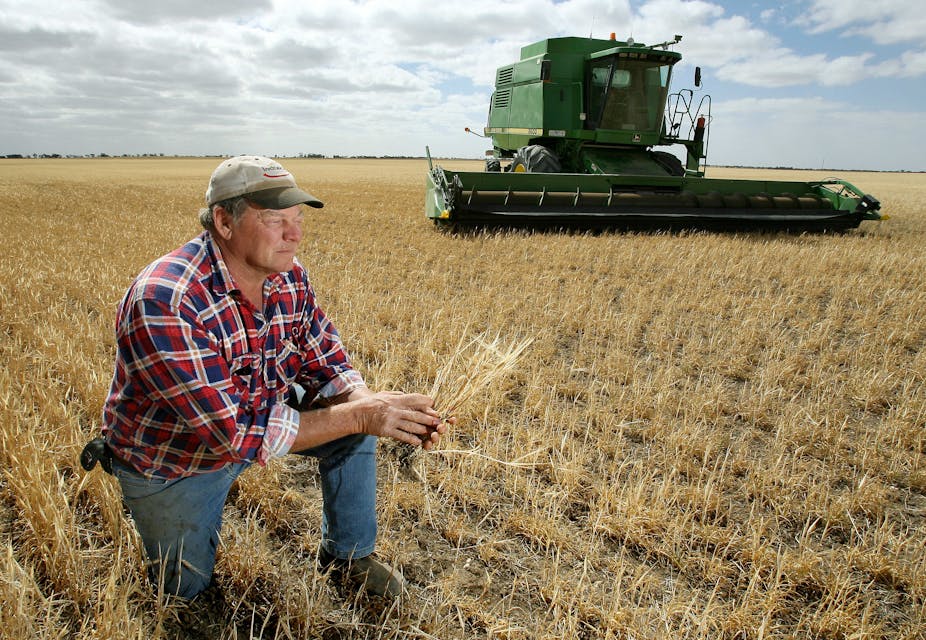Australia has seen many major advances in disease screening, treatment and surgery over the past few decades. But this progress hasn’t been shared equally around the country.
People living outside major cities - roughly one third of the population - face more injury and disease, and die around four years earlier than urban Australians.
Lifestyle factors are just one cause, with greater levels of obesity and more risky health behaviours such as smoking and harmful alcohol consumption in the country.
For cancer sufferers living in rural areas, access to cancer care services is a cause for concern. Cancer diagnoses often come later when the the cancer is more advanced, which means treatment is more difficult or invasive, and the risk of death higher.
These disparities were highlighted in a recent Medical Journal of Australia study on prostate cancer outcomes.
The study showed that prostate cancer survival rates have improved nationwide, with progress in detecting and treating prostate cancer using prostate specific antigen (PSA) blood tests and radical prostatectomies (a surgical procedure for localised prostate cancer treatment).
But while prostate cancer incidence rates in urban and rural parts of Australia are similar, the gap in survival rates between rural and urban men has widened.
Rural men are now less likely to survive a positive prostate cancer diagnosis.
Poor access
The greatest healthcare challenge in Australia is achieving health equity for all Australians, regardless of race, income and place of residence.
In terms of geography at least, we’re still a long way off.
Country men are less likely to have a PSA blood test to detect prostate cancer than city men. They are also less likely to undertake radical prostatectomies to remove prostate cancer.
When combined with similar incidence rates, these patterns suggest a greater proportion of men in rural areas of Australia are diagnosed with prostate cancer because they show symptoms.
This could, in part, explain why their survival rates are consistently poorer.
The patterns for prostate cancer reflect broader patterns of restricted healthcare access for Australians in rural and remote areas.
Tertiary hospitals are difficult to access, limiting availability of specialist medical services, and waiting times for general practitioners generally longer for people in rural and remote areas of Australia.
Of the variables considered in the MJA prostate cancer study, PSA testing is the most amenable to change. But the solution is not as simple as increasing the rates of the PSA blood tests in rural areas.
This measure may merely increase the number of rural men getting a preliminary diagnosis of prostate cancer. However the PSA test is not definitive risk.
It’s more important for these men have access to appropriate clinical care and support systems to have their diagnosis properly confirmed, and if required, appropriate cancer management.
Closing the gap
To an increase PSA testing in rural areas, we need a coordinated program to encourage uptake of PSA testing while simultaneously improving access for rural men to the full range of diagnostic, monitoring and treatment services.
In the same way, locating tertiary hospitals in rural areas is not a viable solution to improve access. The cost of building, maintaining and staffing additional tertiary hospitals is untenable, and patient numbers insufficient to maintain high caseloads.
We need a targeted, multi-faceted solution including investments in telemedicine and e-Health, to broaden and enhance the level of medical and support services provided to those living outside major cities. Many of these initiatives are already under way.
There is much we don’t know about the patterns of care and health service utilisation by men diagnosed with prostate cancer, and the extent to which these men have equitable access to different treatment options and follow-up care.
The same can be said for trends observed among rural populations for other cancers and chronic diseases.
This lack of knowledge is a significant limitation for current health services policy and planning. Research holds the key to understanding these patterns and improving outcomes for rural patients.
By better understanding the link between health outcomes and demographic and individual risk factors, policy makers can devise evidence-based strategies to improve survival.
This will provide all Australians with equal prospects of preventing, detecting, effectively treating and surviving cancer.

